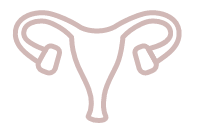Causes of Pain After Gender Affirmation Surgery
Pre-Existing Conditions that Contribute to Transgender Post-Op Pain
Broadly speaking, you are more likely to experience pain symptoms following surgery if you have suffered from pelvic pain issues in the past. There are a number of pre-existing chronic pain conditions that can overlap and cause additional problems following surgery.
Broadly speaking, you are more likely to experience pain symptoms following surgery if you have suffered from pelvic pain issues in the past. There are a number of pre-existing chronic pain conditions that can overlap and cause additional problems following surgery.
-

Myofascial pelvic pain
-

Fibromyalgia
-

Irritable bowel syndrome (IBS)
-

Chronic migraines
-

Interstitial cystitis (IC) or bladder pain syndrome (BPS)
-

Endometriosis
-

Adenomyosis
-

Fibroids
-

Polycystic ovary syndrome (PCOS)






